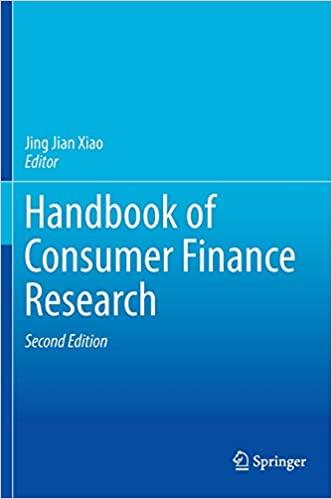Answered step by step
Verified Expert Solution
Question
1 Approved Answer
a . Find the FV of $ 1 , 0 0 0 invested to earn 1 2 % after 4 years. Round your answer to
a Find the FV of $ invested to earn after years. Round your answer to the nearest cent.
$
b What is the investment's FV at rates of and after and years? Round your answers to the nearest cent.
Choose the correct graph of future value as a function of time and rate. Note: blue line is for orange line is for and grey line is for
The correct graph isyears
f Find the PV of an ordinary annuity that pays $ each of the next years if the interest rate is Then find the FV of that same annuity. Round your
answers to the nearest cent.
PV of ordinary annuity: $
FV of ordinary annuity: $
g How will the PV and FV of the annuity in part change if it is an annuity due rather than an ordinary annuity? Round your answers to the nearest cent.
PV of annuity due: $
FV of annuity due: $h What will the FV and the PV for parts a and c be if the interest rate is with semiannual compounding rather than with annual compounding? Round
your answers to the nearest cent.
FV with semiannual compounding: $
PV with semiannual compounding: $
i Find the annual payments for an ordinary annuity and an annuity due for years with a PV of $ and an interest rate of Round your answers to the
nearest cent.
Annual payment for ordinary annuity:
Annual payment for annuity due:
j Find the PV and the FV of an investment that makes the following endofyear payments. The interest rate is
Round your answers to the nearest cent.
PV of investment: $
FV of investment: $k Five banks offer nominal rates of on deposits, but A pays interest annually, B pays semiannually, C pays quarterly, D pays monthly, and E pays daily.
Assume days in a year.
What effective annual rate does each bank pay? If you deposit $ in each bank today, how much will you have in each bank at year
years? Round your answers to two decimal places.
If the TVM is the only consideration, what nominal rate will cause all of the banks to provide the same effective annual rate as Bank A Round your
answers to two decimal places.
Suppose you don't have the $ but need it at the end of year. You plan to make a series of deposits annually for semiannually for quarterly
for monthly for and daily for with payments beginning today. How large must the payments be to each bank? Round your answers to the
nearest cent.
Even if the five banks provided the same effective annual rate, would a rational investor be indifferent between the banks?
It is more likely that an investor would prefer the bank that compoundedI. Suppose you borrow $ The interest rate is and it requires equal endofyear payments. Set up an amortization schedule that shows the annual
payments, interest payments, principal repayments, and beginning and ending loan balances. Round your answers to the nearest cent. If your answer is zero,
enter
Choose the correct graph that shows how the payments are divided between interest and principal repayment over time.
The correct graph is

Step by Step Solution
There are 3 Steps involved in it
Step: 1

Get Instant Access to Expert-Tailored Solutions
See step-by-step solutions with expert insights and AI powered tools for academic success
Step: 2

Step: 3

Ace Your Homework with AI
Get the answers you need in no time with our AI-driven, step-by-step assistance
Get Started


